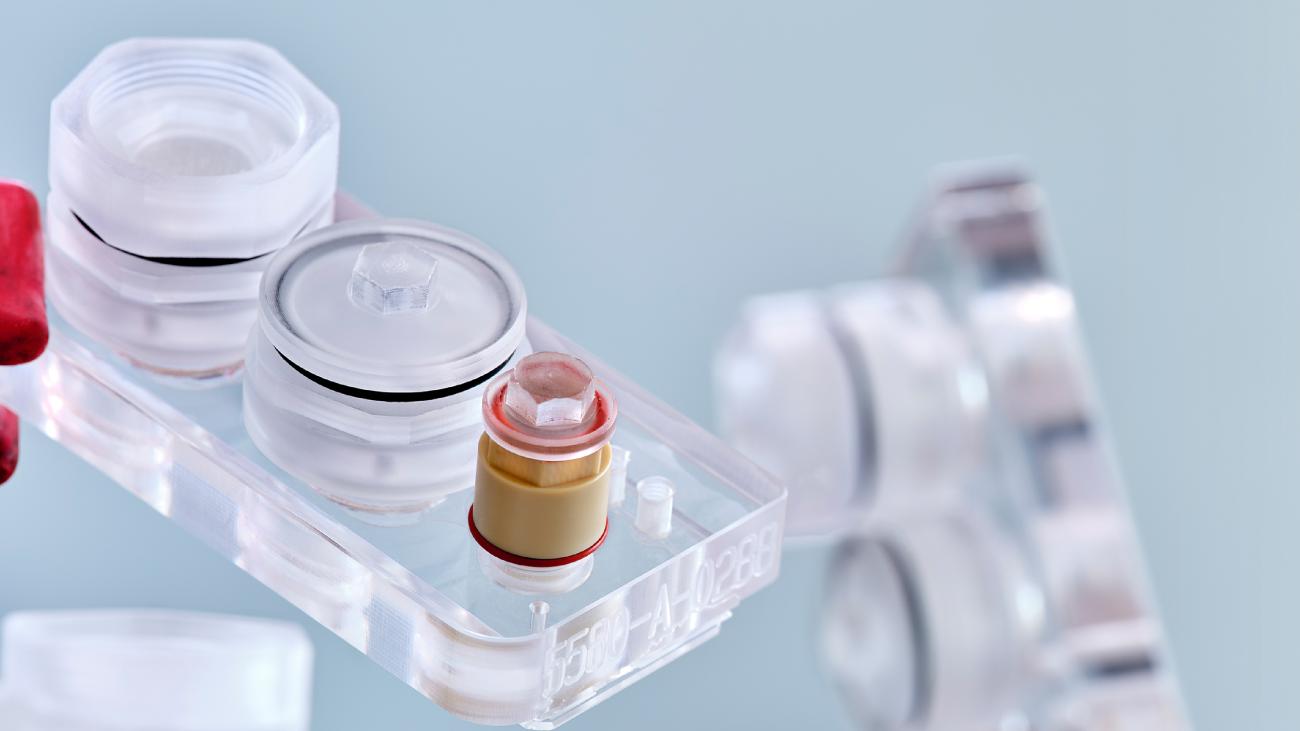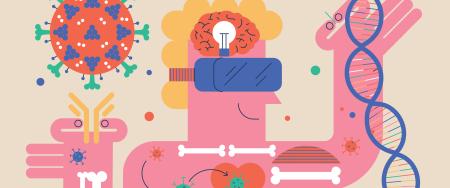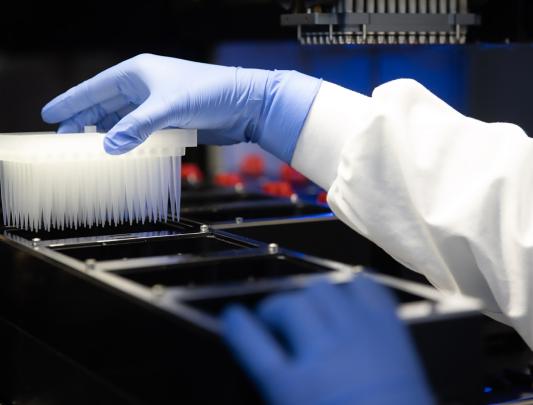Human on a chip
UBC’s Hedtrich Lab takes on Canada’s other drug crisis.
It takes at least 15 years and millions of dollars to bring a new drug to market, and most fail in Phase II or III of development. A key reason is that the differences between humans and non-human animals — still the standard subjects of preclinical studies — is too great.
“We can do better,” states Dr. Sarah Hedtrich simply.
Hedtrich leads research in the eponymous Hedtrich Lab within UBC’s Faculty of Pharmaceutical Sciences. Combining expertise in pharmacology, biomedical engineering and drug delivery, her team of 11 aims to establish next-generation therapies, nanomedicine, and tissue engineering and regeneration, with a particular focus on diseases of the human skin and lung. Their highly interdisciplinary work involves close collaboration with experts in chemistry, medicine and genetics. Perhaps most novel of all is the fact that Hedtrich does not use any animals in her research.
“Mice simply don’t develop eczema,” Hedtrich explains. “[Researchers] trigger eczema artificially and then use this as the model to test the drugs. But they have no idea if what they see in those animals represents what happens in humans. In my field, animal models are not predictive enough. I am trying to develop human-centred methods to reduce, and maybe at some point replace, animal models.”
Hedtrich specializes in 3D tissue models, specifically of skin and lung tissues, that feature all of the important layers, structures and reactivity of human skin. She connects them with other 3D organ models to form a network that begins to resemble and behave with the complexity of a living human organ system. Organs on a chip.
Hedtrich holds up a plastic chip approximately 4 centimetres long by 8 centimetres wide by 1 centimetre thick — readily available online, apparently — out of which rise three circular, dished cylinders of different heights and diameters, each meant to hold a different organ tissue model. Each cylinder is connected to the others by a microfluidic channel etched into the plastic, to which a pump is attached that moves the culture medium through the channels to simulate blood flow. The whole thing resembles a cool-looking toy — Lego for lab nerds.
“In our bodies, no tissue is isolated,” Hedtrich says. “Everything is connected. When I apply something to the skin, it ends up in the bloodstream and then the liver. In order to predict what a drug will do in the human body, you need complex systems where different tissues are connected.”
In a recent Nature article on how COVID-19 has highlighted the urgent need for alternatives to animal models by which to study human viruses, Hedtrich et al state that once scientists are able to engineer a 10-organ system — with circulatory, endocrine, gastrointestinal, immune, integumentary, musculoskeletal, nervous, reproductive, respiratory and urinary tissue models — they will have achieved the complexity researchers require: human on a chip.
Currently, setups are not modular (most chips aren’t made to connect with one another), are expensive, require significant and highly specialized expertise to engineer and operate, and can take one to two years to build. Many researchers who need or would prefer to use these setups do not have the financial resources or the expertise of a Hedtrich Lab to create the tissue models. “If we want more people in biomedical engineering to use these, then we need cheaper systems and we need modular systems,” Hedtrich says.
While Hedtrich cautions that no large studies have yet proven these models’ superiority to animal models in predicting drug efficacy, she cites cosmetics and toxicity testing as immediate use cases. In fact, approximately 40 countries worldwide have already banned animal testing of cosmetics. Canada, however, is not one of them. At a policy level, Canada lags well behind the EU, Asian countries, South America and the US.
A relatively recent arrival from Germany, Hedtrich expresses surprise over Canada’s failure to play a leading role in the global movement toward animal alternatives. However, she is unstinting in her praise of Canadian scientists in this field, saying they are at the forefront of this research. And, together with organizations such as the Canadian Centre for Alternatives to Animal Methods (led by UWindsor’s Dr. Charu Chandrasekera) and the Canadian Society for Humane Science (led by UBC’s Elisabeth Ormandy), she intends to build a national network to foster awareness, education and training, and collaboration.
Hedtrich guest-teaches in Ormandy’s undergraduate course at UBC – New Approach Methods in Biomedical Science. Hedtrich’s lab-based graduate course will resume once in-person work is possible again, and she is committed to training young researchers in these alternative methods. She knows that unless something changes at the policy level, they’ll face the same barriers to accessing funding and even to publishing their research findings that she faces now. “The field is still in its infancy,” Hedtrich concedes, “but I’m convinced this is the future.”





































